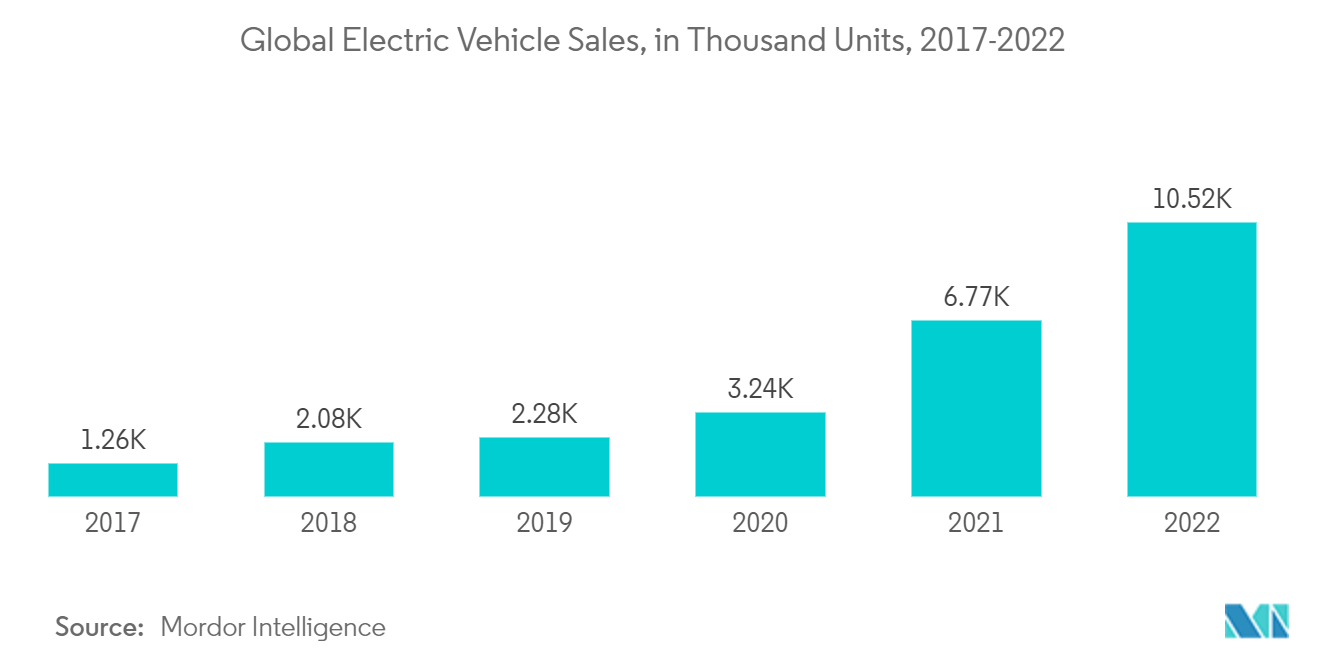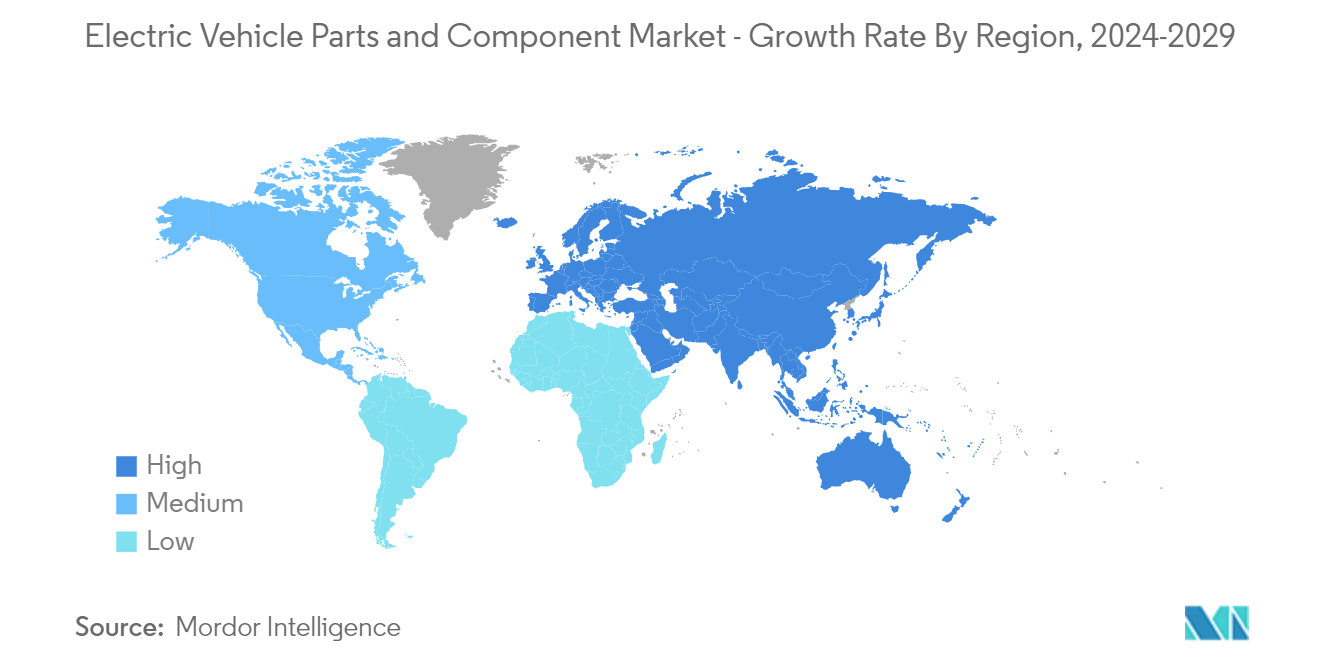Market Trends of Electric Vehicle Parts And Components Industry
Increasing Investments in Electric Vehicles Driving the Market
- Electric vehicles have become an integral part of the automotive industry, and they represent a pathway toward achieving energy efficiency, along with reduced emissions of pollutants and other greenhouse gases.
- The increasing environmental concerns, coupled with favorable government initiatives, are the major factors driving this growth. The annual sales volume of electric passenger cars is projected to cross the 5 million mark by the end of 2025, and it is expected to account for 15% of the overall vehicle sales by the end of 2025. Logistics and e-commerce sectors are also investing heavily in increasing their electric vehicle fleets.
- Several manufacturers have raised the bar to go beyond the previous announcements related to electric vehicles (EVs) with an outlook beyond 2025. More than ten of the largest original equipment manufacturers (OEMs) have declared electrification targets for 2030 and beyond. Significantly, some OEMs plan to reconfigure their product lines to produce only electric vehicles.
- For instance, Mercedes-Benz is in the process of restructuring its strategy to increase profits by focusing on higher-priced luxury vehicles. As part of its plan to go all-electric by 2030, the manufacturer intends to upgrade its product portfolio and discontinue lower-cost models.
- Volkswagen is planning to spend USD 36 billion on electric cars across its mass-market brands by 2024 end. According to the company, by 2025, at least 25% of its global sales will be electric vehicles.
- Mahindra & Mahindra (M&M) is one of the leading vehicle manufacturers in Asia. The company is planning to launch new electric vehicles. At present, the company has only one electric model, eVerito.
- Volvo announced that it will only sell electric cars starting in 2030. Ford will only sell electric cars in Europe starting in 2030. General Motors plans to offer only electric vehicles after 2035. Volkswagen aims for 70% electric car sales in Europe and 50% in China and the United States by 2030. Stellantis aims for 70% of the electric car sales in Europe and 35% in the United States.

Asia-Pacific Anticipated to Witness Significant Growth
- Rising government emphasis on increasing the adoption of electric vehicles and the availability of government incentives for electric vehicles are expected to drive the demand for electric vehicles in Asia-Pacific during the forecast period. Governing bodies of several countries from Europe, North America, and Asia-Pacific have announced their plans to phase out fuel-powered vehicles during the upcoming ten years. This will also have a positive impact on the growth of electric vehicles during the forecast period.
- The market studied in Asia-Pacific is expected to grow at a faster rate, followed by Europe and North America, as countries such as China and Japan are inclined toward innovation, technology, and the development of advanced electric vehicles. Moreover, ASEAN countries are engaged in large electric mobility projects.
- China is a key player in the global electric vehicle industry. Moreover, the government of China is encouraging people to adopt electric vehicles. The country is planning to completely switch to electric mobility by 2040. The Chinese electric passenger car market is also one of the largest worldwide, and it has been growing rapidly over the last few years and is expected to grow higher during the forecast period, which is also going to have a positive impact on the demand for electric vehicle parts and components market.
- Japan has one of the best electric vehicle ecosystems in the world. Automotive companies like Toyota and Nissan are taking steps toward building electric vehicles in the country. The developments in the hybrid and electric vehicle market can be gauged by the presence of a number of players in the country. These favorable factors are expected to drive the market for hybrid and electric vehicles in Japan.
- The Indian government has been formulating various strategies to reduce pollution in the country. For instance, India, with its FAME and FAME II policies, has been providing incentives to customers and attractive options for investors as well as manufacturers to set up EV plants to propel the nation toward the faster adoption of green vehicles. Automobile manufacturers in India are also taking initiatives and investing in R&D practices to provide affordable electric cars in India.
- For instance, in January 2023, Tata AutoComp Systems Limited (Tata AutoComp) displayed a wide range of parts that it has already localized and is offering to the EV segment. Tata AutoComp has also been working on lightweight products and solutions to help electric vehicles extend their range. Such factors are likely to drive the market’s growth over the coming years.


